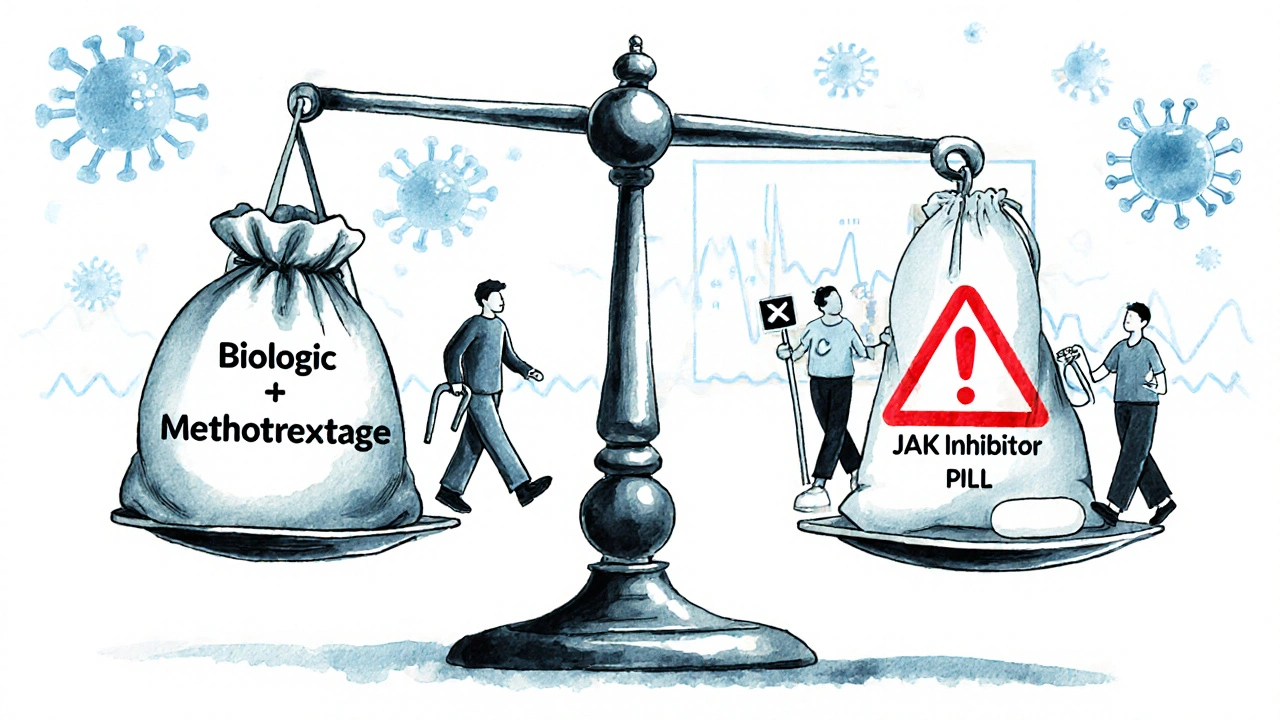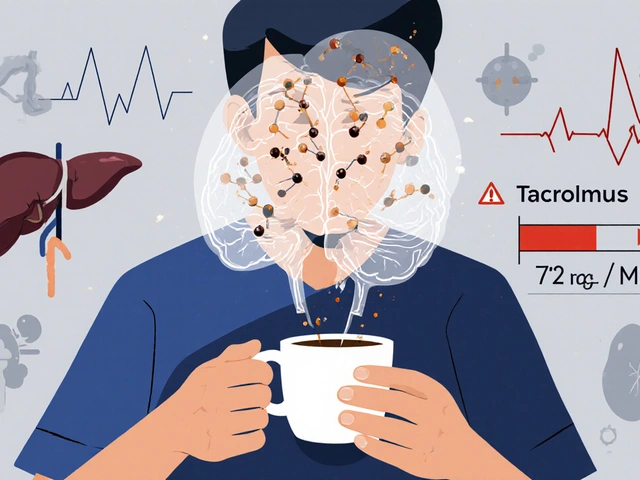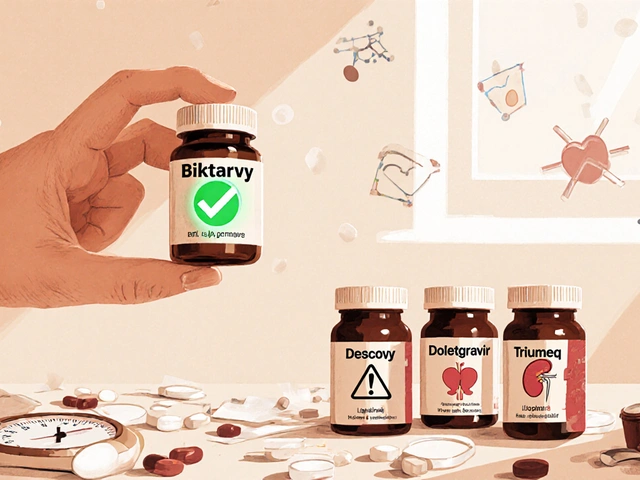What You Need to Know About RA Medications and How They Work Together
If you or someone you know has rheumatoid arthritis (RA), you’ve probably heard terms like DMARD and biologic thrown around. But what do they actually mean-and why does it matter how they’re used together? This isn’t just medical jargon. It’s about controlling pain, stopping joint damage, and getting back to daily life without constant fatigue or swelling. The truth is, most people with RA don’t take just one drug. They take combinations. And the way these drugs interact can make all the difference between barely managing symptoms and actually reaching remission.
Let’s cut through the noise. There are two main types of drugs used to treat RA: conventional synthetic DMARDs (csDMARDs) and biologic DMARDs (bDMARDs). The first group includes older, well-tested pills like methotrexate, sulfasalazine, and leflunomide. These aren’t new-they’ve been around since the 1980s. Methotrexate, in particular, is the foundation. It’s cheap, effective, and used in nearly every treatment plan. The second group-biologics-are newer, more targeted, and far more expensive. They’re made from living cells and work by blocking specific parts of the immune system that go haywire in RA.
Why Methotrexate Is Still the Anchor Drug
Methotrexate isn’t fancy. It’s a small molecule taken once a week, usually as a pill or injection. It works by slowing down the overactive immune response that attacks your joints. At doses of 7.5 to 25 mg per week, it reduces inflammation and slows joint damage. But here’s the key: it doesn’t work for everyone. About 20-30% of people can’t tolerate it because of nausea, fatigue, or liver issues. Still, even in those cases, doctors start with it. Why? Because it’s the most studied, the most effective baseline, and it makes other drugs work better.
A 2015 study published in the Journal of Managed Care & Specialty Pharmacy showed that when biologics are added to methotrexate, response rates jump from 30-40% to 50-60%. That’s not a small boost. That’s the difference between still feeling stiff and swollen every morning versus being able to open a jar or tie your shoes without pain. Even the American College of Rheumatology’s 2021 guidelines say methotrexate should be the first drug you try-unless you can’t take it.
And if you can’t? Doctors don’t just switch to a biologic right away. They often try other csDMARDs like sulfasalazine or hydroxychloroquine in combination. The CAMERA-II trial in 2013 showed that a triple combo of methotrexate, sulfasalazine, and hydroxychloroquine worked just as well as adalimumab (a biologic) plus methotrexate over two years. That’s huge. It means you don’t always need the expensive option to get good results.
How Biologics Actually Work (And Why They’re So Different)
Biologics aren’t pills. They’re proteins-large, complex molecules made in labs using living cells. Because your body breaks them down if you swallow them, they have to be injected or infused. You’ll get them either under the skin (subcutaneous) or through an IV. Common ones include adalimumab (Humira), etanercept (Enbrel), and rituximab (Rituxan).
Each one targets a different part of the immune system:
- TNF inhibitors (like Humira and Enbrel) block tumor necrosis factor, a major driver of inflammation.
- Abatacept stops T-cells from getting activated.
- Rituximab wipes out B-cells that produce harmful antibodies.
- Tocilizumab blocks interleukin-6, another inflammatory signal.
- Anakinra blocks interleukin-1, but it’s rarely used now because it’s less effective and requires daily shots.
These aren’t just stronger versions of methotrexate. They’re precision tools. They don’t suppress your whole immune system-they pick out the specific parts causing trouble. That’s why they work so well for people who don’t respond to csDMARDs. But they also come with risks.

The Risks: Infections, Costs, and Side Effects
Biologics are powerful. But power comes with trade-offs. Because they turn down specific immune signals, your body becomes more vulnerable to infections. Tuberculosis, pneumonia, and skin infections are the most common. That’s why everyone starting a biologic gets screened for TB first. Some patients report needing antibiotics every few months after starting treatment.
Injection site reactions are also common-redness, itching, or swelling where the shot goes in. About 8% of people find these reactions bad enough to switch meds. And then there’s the cost. A month of a biologic can run $1,500 to $6,000. Methotrexate? $20 to $50. Even with insurance, copays can be hundreds of dollars a month. That’s why 28% of RA patients in a 2022 Arthritis Foundation survey skipped doses or stopped taking their meds because of cost.
But there’s good news: biosimilars. These are nearly identical copies of brand-name biologics, approved since 2016. Amjevita, a biosimilar to Humira, cuts the price by 15-30%. As of 2023, biosimilars make up 28% of the U.S. biologic market. That’s changing access-and it’s why more people are getting these drugs now than ever before.
JAK Inhibitors: The New Oral Option
There’s a third category now: targeted synthetic DMARDs, or JAK inhibitors. These include tofacitinib, baricitinib, and upadacitinib. They’re pills-like methotrexate-but they work like biologics. They block signals inside immune cells that trigger inflammation. That’s a big deal. No injections. No infusions. Just a daily pill.
Upadacitinib (Rinvoq) got FDA approval in 2023 as a first-line option for early RA-even without methotrexate. In the SELECT-EARLY trial, it achieved remission in 40% of patients compared to 35% with methotrexate alone. That’s close enough to make it a real alternative for people who can’t tolerate methotrexate or hate needles.
But there’s a catch. JAK inhibitors carry a black box warning from the FDA. They’ve been linked to higher risks of serious infections, blood clots, heart attacks, and certain cancers, especially in older patients or those with existing heart disease. That’s why doctors don’t jump to these first. They’re usually tried after biologics-or when biologics aren’t an option.
Combination Therapy: More Than Just Two Drugs
Most people on biologics take them with methotrexate. Why? Because together, they work better. Studies show combination therapy boosts response rates significantly. But it’s not just about adding drugs. It’s about timing. Doctors don’t wait years to add a biologic. If you’re still in moderate-to-high disease activity after 3-6 months on methotrexate alone, it’s time to consider adding one.
And here’s something most patients don’t realize: you don’t always need both. About 33% of people on biologics take them alone. Why? Because they couldn’t handle methotrexate. Nausea, liver problems, or just plain intolerance. In those cases, biologics can work on their own-but they’re less effective than when paired.
For patients with aggressive RA-high levels of rheumatoid factor, early joint damage, or very high inflammation-combination therapy is the gold standard. Dr. Joel Kremer’s research found that 40-50% of these patients reach ACR70 response (a major improvement) with biologic + methotrexate. Without it? Only 25-35% do.

What Real Patients Are Saying
Online forums like Reddit’s r/rheumatoidarthritis have thousands of posts from people living this daily. In a 2022 thread with 147 comments, 63% said they preferred biologic + methotrexate, even with side effects, because their pain and swelling dropped dramatically. One user wrote: "I was in a wheelchair. After six months on Humira and methotrexate, I walked my dog again. Worth every injection."
But 37% said they went with monotherapy because methotrexate made them too sick. "I couldn’t eat. I was exhausted all the time," said another. "Switching to adalimumab alone was the best decision I ever made. I still have fatigue, but I can work now."
Cost is a huge factor. The Arthritis Foundation’s survey found that 41% of patients worry about affording their meds. Many rely on specialty pharmacies and patient assistance programs that cover 30-50% of out-of-pocket costs. But navigating these programs takes time-and many patients give up.
What Comes Next? The Future of RA Treatment
The field is moving fast. In 2024, draft guidelines from the ACR now include ultrasound remission as a treatment goal-not just how you feel, but what the scan shows. That’s a shift toward precision. We’re no longer just guessing if the drug is working. We’re measuring inflammation directly.
New drugs are in the pipeline. Otilimab, which targets GM-CSF, and deucravacitinib, a more selective JAK inhibitor, could offer better safety profiles. But for now, the choices are clear: start with methotrexate, add a biologic or JAK inhibitor if needed, and use biosimilars to cut costs.
There’s no one-size-fits-all. Some people do great on csDMARDs alone. Others need biologics to survive. The key is early, aggressive treatment. The longer RA goes untreated, the more joint damage accumulates-and that’s irreversible.
What to Ask Your Doctor
If you’re on RA meds, here are five questions to ask at your next visit:
- Am I on the right combination for my disease severity?
- Have we checked my inflammation levels with blood tests or imaging recently?
- Are there biosimilars available for my current biologic?
- What are my risks for infection or other side effects?
- Is there a patient assistance program I qualify for?
Don’t wait until you’re in pain to ask. These conversations should be routine. Your treatment plan isn’t set in stone. It should change as your body changes.









